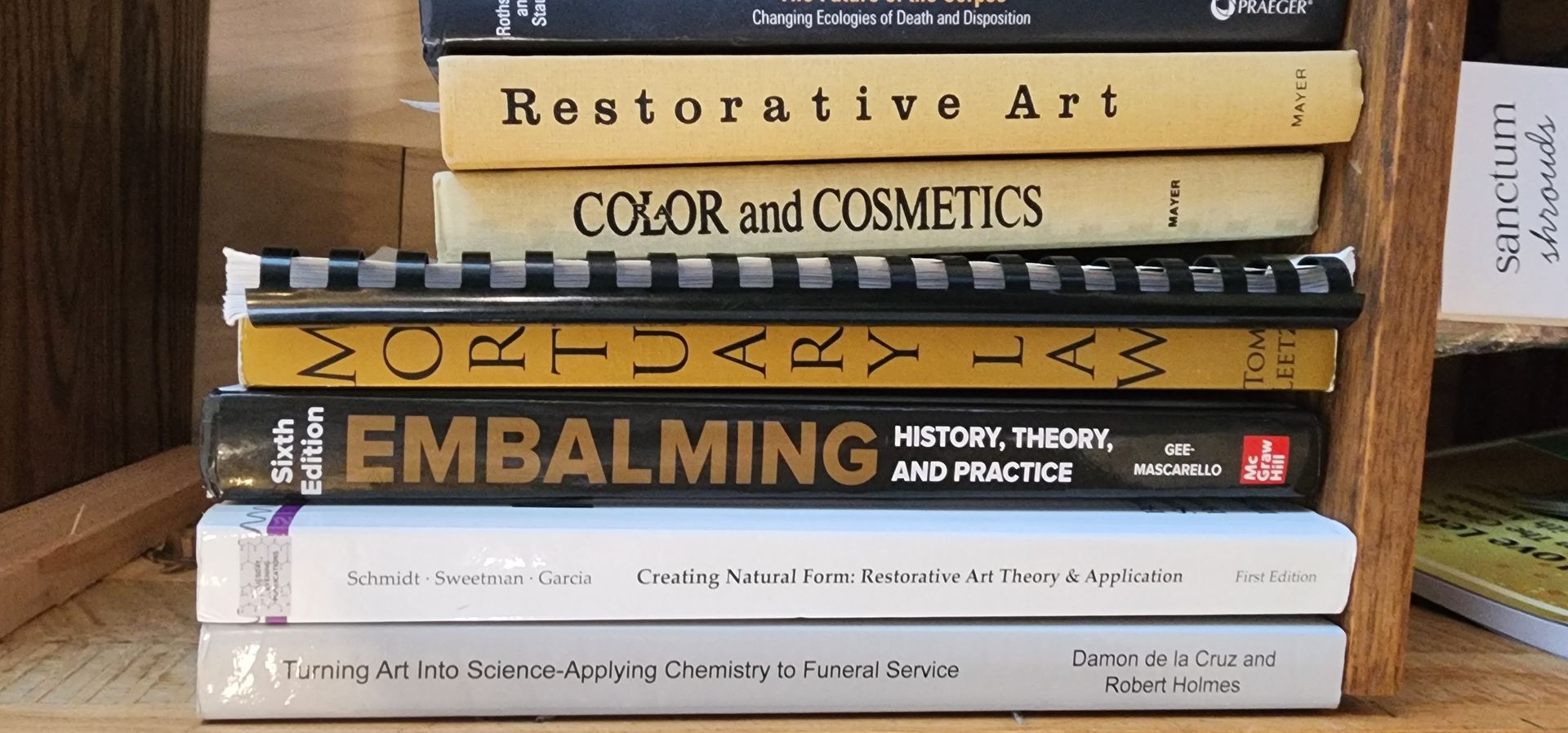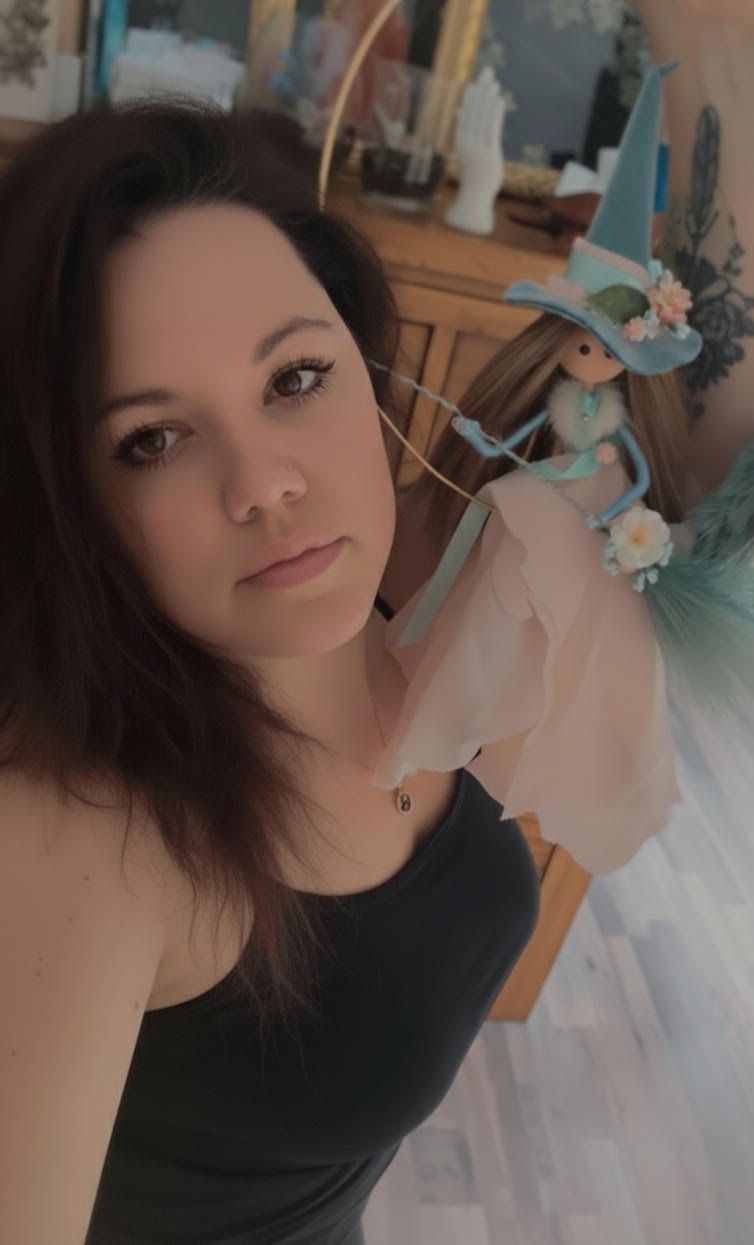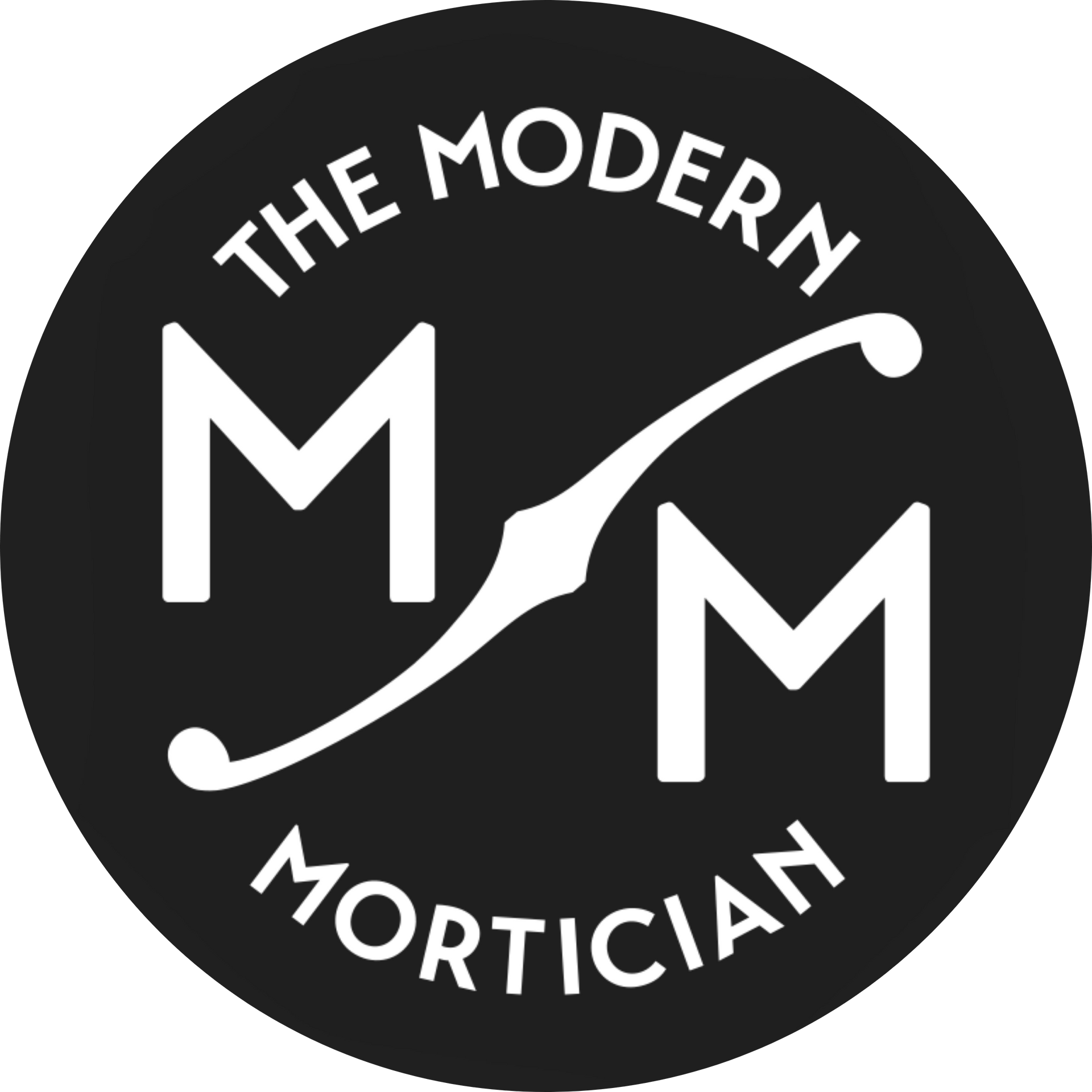THE MUSHROOM BURIAL SHROUD that covered Luke Perry’s face and famous forehead was black as night, or perhaps it was white as bone, made of organic cotton, and inlaid with white crochet tubes that resembled lightning and pointed from the shoulders, hips, feet, and hands toward his heart, which was still in his chest. Each tube contained mushroom spores that had been trained to eat his flesh. He was to be consumed, in the shallow grave of his choosing, and return to the quiet embrace of the earth at his farm in Tennessee, dead of a stroke at fifty-two.
I can’t say how Luke Perry looked before he was buried because I wasn’t invited to watch. The ceremony was a private affair for his family and closest friends, and I am neither. But I have heard descriptions of him emerging from the hearse, his face covered by the shroud, his hands gloved and crossed over his chest. And I have imagined what happened from there. The ground would close around him, sealing out light, then sound. His consumption would begin with erasure. It must have appeared like seeing him first through a fogged shower door, then tissue paper, those soft eyes now blankly open to the earth. Fungal growth tips, called hyphae (the Greek word for “web”), would emerge, following the lightning pattern inward toward his heart. The fungi would then expand outward and entangle with plant roots in an exchange of nutrients as old as life on the dry parts of the planet. The poisons inside his body would be neutralized by the fungi and Luke Perry would travel through mycelium to roots in a sprawling, if poorly understood, exchange that underwrites life. The edges of him would become blurry, then meaningless, as mushrooms reorganized his body toward life again. Then he’d push back into the sunlight of his farm, where he was happiest, maybe as a leaf or an insect, soil or bird, snake or rabbit. In practically no time, he would be gone and yet everywhere. Joined. Connected. Safe.
WE ALL KNEW Luke Perry from his breakout role on Beverly Hills, 90210, a teen drama from the 1990s. For years, his image was inescapable, sleeveless, hair coiffed into the second coming of James Dean. The lines of his forehead added with the thinnest paintbrush imaginable. He played Dylan McKay, the brooding, broken loner who exuded the kind of self-possession that is only ever won through tragedy, the kind that always leaves a mark. He of the white T-shirts and the too cool had eyes that shocked us with their softness, and a recklessness that made us worry for him. He wore vulnerability like an open secret. He taught a generation how to smolder.
The first episode of Beverly Hills, 90210 is pretty standard fish-out-of-water stuff. But episode two introduces a bit of restrained menace in Dylan McKay, who debuts from a dark corner, coiffed and leather-jacketed, to intimidate a pair of bullies. “Your friend’s pretty cool,” remarks Brandon, the show’s protagonist, and he was right. Luke Perry played Dylan as cool and self-possessed, which he somehow conveyed despite having auditioned for several hundred roles before landing his breakout.
The rest of the world was not quite as restrained in its response. The show’s viewers went berserk in a frenzy of crushes and emulation. Everywhere wanted to be Beverly Hills and everyone either wanted to be with Dylan McKay or to be like him. There is a famous story about Luke Perry’s stardom when it was peaking in the early 1990s. He was doing a public appearance for 90210 at a mall in Seattle when a crowd of young girls had become so rabid that they started to riot. People got hurt. It was as if the mass had become an organism unto itself, spreading out in all directions and at whatever cost to consume Luke Perry.
He had to be smuggled out buried in a laundry hamper. It was his last public appearance for the show. He knew he was an object of desire, but in an interview with Rolling Stone at the time, it seems like it rattled him. In subsequent interviews he started to talk more about 90210 as a way to get parents and kids to confront the difficult business of growing up in a world where guns and pregnancy scares, AIDS and social justice find their way into the enclaves of privilege.
He learned how to keep the great want of the world away by closing off access to his physicality, his actual body. He raised his kids, Sophie and Jack, to be respectful and work hard, and he drove them around in a minivan. He bought the farm property in Tennessee (he came from Ohio farming stock) and gave out food and clothing during a flood in 2010. He worked to see and honor the humanity in all the folks around him, to separate the individual back out of the mass. He befriended a woman experiencing homelessness who lived near him in Los Angeles and let her use his shower. Everyone said he had a big heart and a strong desire to leave the world a better place. Many of the obituaries written about him say he cared about Earth, but I couldn’t find many specifics. Anonymous as a prolific philanthropist. Maybe that’s all we need to know.
So then perhaps it wasn’t a total surprise when he told his daughter about the mushroom burial shroud. He was around fifty then, seemingly far from death. He “was more excited by this than I had ever seen him,” she wrote on Instagram about six weeks after he died. “He was buried in that suit, one of his final wishes.”
THE SPORES INSIDE Luke Perry’s burial shroud had been trained by an artist named Jae Rhim Lee, who fed them her hair, skin, and fingernail clippings. She called them Infinity Mushrooms. “As I watch the mushrooms grow and digest my body, I imagine the Infinity Mushroom as a symbol of a new way of thinking about death and the relationship between my body and the environment,” she said in her 2011 TED talk. Her idea originated out of concern for what our bodies leave behind after a lifetime’s worth of bioaccumulating poisons in our fats, plastic in our lungs, and mercury in our dental fillings. It gets worse after all the fillers and formaldehyde and makeups that keep the sallowness out of our cheeks, restore color to our lips, and make the deceased shelf stable, so that the living may have pleasant final memories. We think of this as a denial of decay, if not denial of death itself. But it is more or less a debt to the distant future.
Death is life’s sturdiest muse. As Robert MacFarlane points out in Underland: A Deep Time Journey, the idea of what happens after death is the subject of our oldest recorded story, when Sumerian king Gilgamesh sent a warrior to the underworld for news of his deceased child around 2000 BCE. Nor did Beverly Hills, 90210 flinch from it, most notably in the second season when a hanger-on named Scott Scanlon accidentally shoots himself in the belly. World religions construct worldviews around the idea that there is something preservable and irreducible (a soul, maybe, or a spirit) that can be made to be durable against death.
He learned how to keep the great want of the world away by closing off access.
But that still leaves the body. It is a little indelicate to think of burials or cremations as body disposal, but that is what they are, dressed up in a bit of ritual. Unless you are the type to have your cremated remains put into orbit around the sun, your body is going to end up with the earth.
For the vast majority of us, there are two scenarios. You will either be reduced to carbon dioxide and ashes in a process that uses the same amount of gas as two tanks for an average car and draws oxygen into the crematoria like a vast, unrelenting inhale. Or you’ll be plumped with chemicals and fillers, slathered in makeup, and put in a hole in the ground that is deeper than most soil microorganisms—a sort of cold storage in the root cellar.
LUKE PERRY WAS A STYLE ICON and a trendsetter of the cool (sideburns, notably) and stayed out ahead of the rest of us in thinking about death. When he saw Jae Rhim Lee’s TED talk, he invested, and unknown to Lee at the time, he purchased a shroud for himself. A couple years later, after a cancer scare, he formalized his last wishes and told his family about them. Luke Perry, it seems, viewed death as a plannable eventuality worth being clear about, rather than a taboo. He could talk about his death.
Green burial, as such wishes are known, is gaining in popularity. In 2022, a study by the National Funeral Directors Association showed that 60.5 percent of respondents were interested in green burial, up 5 percent from the year before. USCatholic.org ran a poll in 2011 in which 80 percent said they’d prefer a greener burial if they had the option. People cite the lower cost (no embalming, simple caskets, no crematorium fees or cemetery maintenance), a lighter footprint (no embalming again, no fossil fuels or vaporized heavy metals), and a better connection to the earth (carbon dioxide is a pollutant). But the desire precedes the technology, and much of what’s being marketed today is the idea of a green funeral.
Most of us have seen the picture of a tree with the pod at its roots. Inside the womb-like pod, in the fetal position, is the deceased. The language promotes this as a way to feed and nourish a tree, although a body in early-stage decomposition releases enzymes that are harmful to plant roots and chase its life away. Maybe you’ve seen the tree with a compartment in the dirt for cremated remains, but those turn as hard as concrete when mixed with water. There has to be an intermediary.
Enter the mushroom burial shroud. Fungi are decomposers, and the easiest way to think of them is as a sort of expanding, underground plaster. They spread out in the seams of the soil and can become very large—those capped stalks we see are merely the small fruiting bodies. Over eons, fungi have learned to handle death and convert it into nutrients, which they then trade with plants for carbon and sugar. An estimated 90 percent of plants are connected to this network, but most of the trade is in plant-derived decay.
Animals die differently. Right now, inside you, are the very organisms that will begin to break down your body after you breathe your last. Carbon dioxide accumulates in your body, creating an acidic environment and rupturing cell walls, which release an enzyme that then digests the cells. The first stage of decomposition is autolysis, literally self-digestion, with the intestines and pancreas being the strongest actors. You carry your death with you everywhere you go. This turned out to be too much for Infinity Mushrooms.
In 2016, Melissa Meadow, known on Instagram as The Modern Mortician, and a researcher from the University of Texas at Austin were hired by Jae Rhim Lee to test the mushroom suit. Meadow found a candidate who was excited about the trial, shrouded her body, and buried her three feet deep at the bottom range of the soil’s life zone at Eloise Woods Natural Burial Park in Austin, Texas, after she died. They inserted a thin PVC pipe into the grave so they could thread in a camera to monitor what was going on.
Months went by, but no mushrooms were forming on the skin following any kind of lightning pattern toward the heart. There was just the normal, natural, unimpeded process down there in the loamy Texas dirt, ticking in the clockwork way that evolved alongside life.
That might have been it for the mushroom shroud. But Luke Perry died of a stroke three years later and his stardom and the tragedy of his early death resurrected it. Jae Rhim Lee spoke at his funeral. Today, if you Google mushroom burial shroud, his story comes up, as do tons of others promoting the virtues of this style of green funeral. You have to get deep before you learn the shroud doesn’t work.
Luke Perry knew about desire, having been buried in a laundry hamper to escape it. He also knew it as the holder of a notion about physical erasure from the planet, that our bodies don’t have to harm the earth when we die. We all know desire. Death is a muse, but desire is a blunter sort of thing. Maybe it doesn’t matter that the mushroom suit didn’t work; maybe it’s all that matters. Life crafts and carries its own death just the same.
THE ENDURING LEGACY of Beverly Hills, 90210 is the way it defined youth culture at a certain moment in time. It was the era of the first televised war (Operation Desert Storm), of Rodney King’s assault by the LAPD. We were witnessing history unfolding in real time on TV. The world was a terrifying place to be young and vulnerable. And it was onto this backdrop that the show’s producers let us see tragedy coming.
The scene is a birthday party in Beverly Hills. One of 90210’s main characters, David, is roped out of pity and a sense of loyalty into throwing a surprise party for his old friend Scott, whom he had known forever and who is no longer really his close friend. Most of the guests leave after a short time. Tension develops between Scott’s mom’s desire for a birthday party an eight-year-old might enjoy and the high school horndogs who simply must make out wherever they go.
No one can find a lighter for the birthday candles. Scott, with a sweep of blond hair and a rodeo belt buckle on his jeans, goes upstairs into his father’s desk to look for one. Then he gets curious, dumps out a container of pencils, and finds a key. The synthesizer music starts up, mysterious and kind of menacing.
Life crafts and carries its own death just the same.
Scott unlocks a drawer, finds a brown leather box, and opens it. He pulls out the black semiautomatic and flips it over in his hand a few times and his finger slides onto the trigger.
The scene switches back downstairs, where Scott’s father has found matches. David is dispatched upstairs to retrieve Scott. The synthesizer picks away at a few more notes.
David opens the door. “Scott, come on. They found some . . .”
“Hey David, check this out.”
He starts to spin the gun on his finger.
“Scott. Scott. Scott! Put that—”
The gun flies off his finger and smacks against the desk, discharging with a flash. David throws his hands to his head in shock. There is no blood. No screaming. There is just the empty surprise of someone who just saw too much, who saw a life whisked away, who saw death.
Luke Perry’s children rushed to his bedside after the stroke in late February 2019. Things weren’t looking good and they all knew. It took a few days to find recipients for his organs before they took him off life support. His lungs and liver and kidneys were dispersed by the most fundamental desire of all, which is the desire to go on living.
But they could not find a match for his heart. His heart, inside his chest, inside the mushroom burial shroud, was pressed against the silty soil left behind by eons of flood cycles in what we now call Tennessee but that has only been known by that name for a short time. The soil teems with the organisms that will convert his death back into life. It will return—even now, is returning—back to the full embrace of the earth.
After Scott dies of his gunshot wound, the 90210 gang dedicates its time capsule to him. We are informed that every fifty years, a group of students breaks into the West Beverly Hills High campus at night and buries a keepsake. They fill theirs with the accoutrements of the day: fluorescent pink Lycra spandex, a Corvette key chain. Dylan McKay throws in surfboard wax to “symbolize the waves that have been pounding the shores for thousands of years, when really it’s just a brief moment in time.”
“Yeah,” Kelly says, after Brandon and Steve have stepped out of the two-foot-deep grave for their time capsule, “but how do you know someone’s gonna be here in fifty years to dig it up?”
Dylan answers: “Time will tell.”
Luke Perry died at fifty-two. The final act is always a tragedy, but there is still room in the epilogue. In another ten years, more or less, all his earthly remains will be completely mined for life, given up to the embrace that would hold him at last and always has. He will be gone but returned, reunited, safe. Time always tells.
Casey Lyons lives in Colorado and is writing a book about dandelions. When he goes, he’ll go into the ground about three feet deep.
New Paragraph












